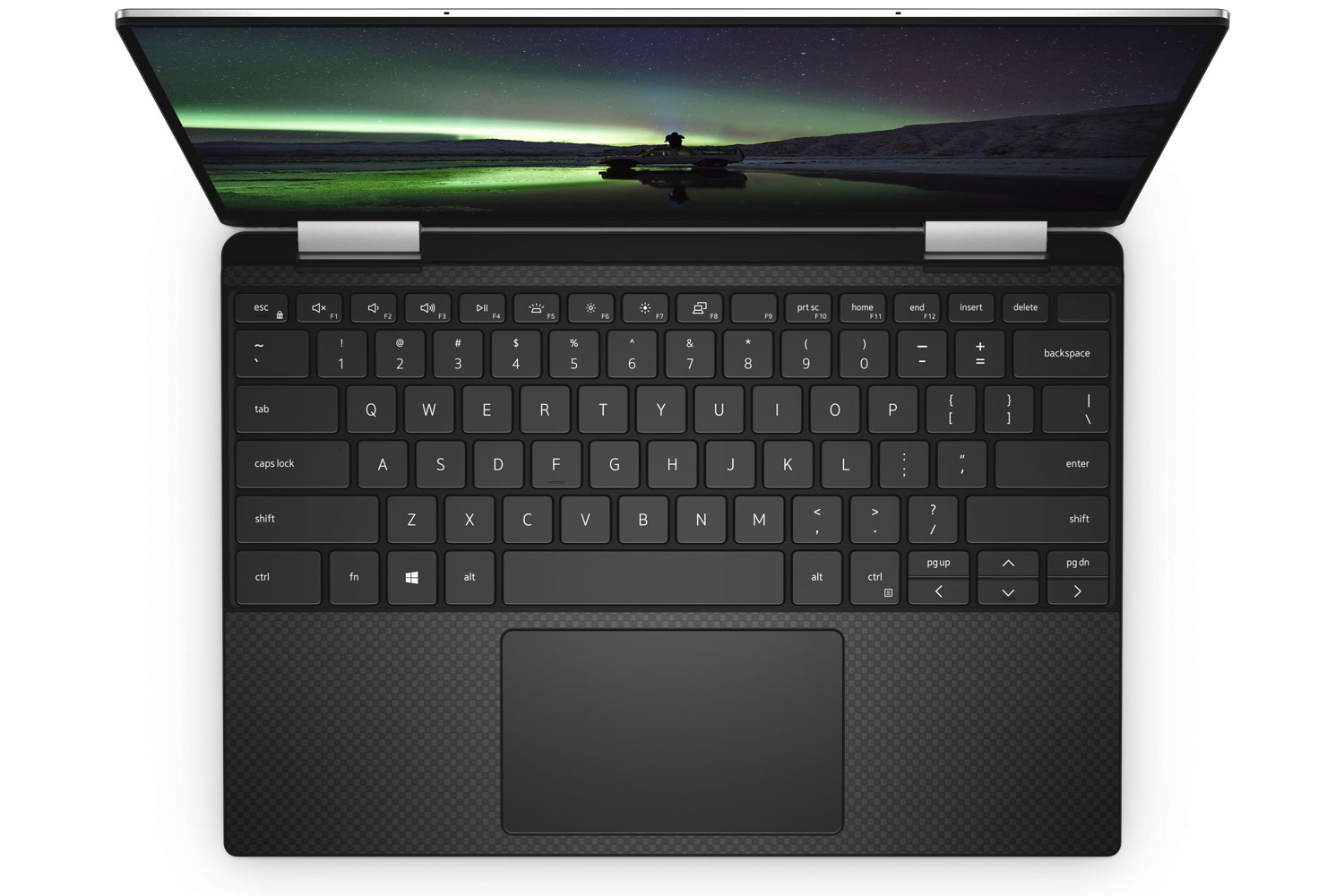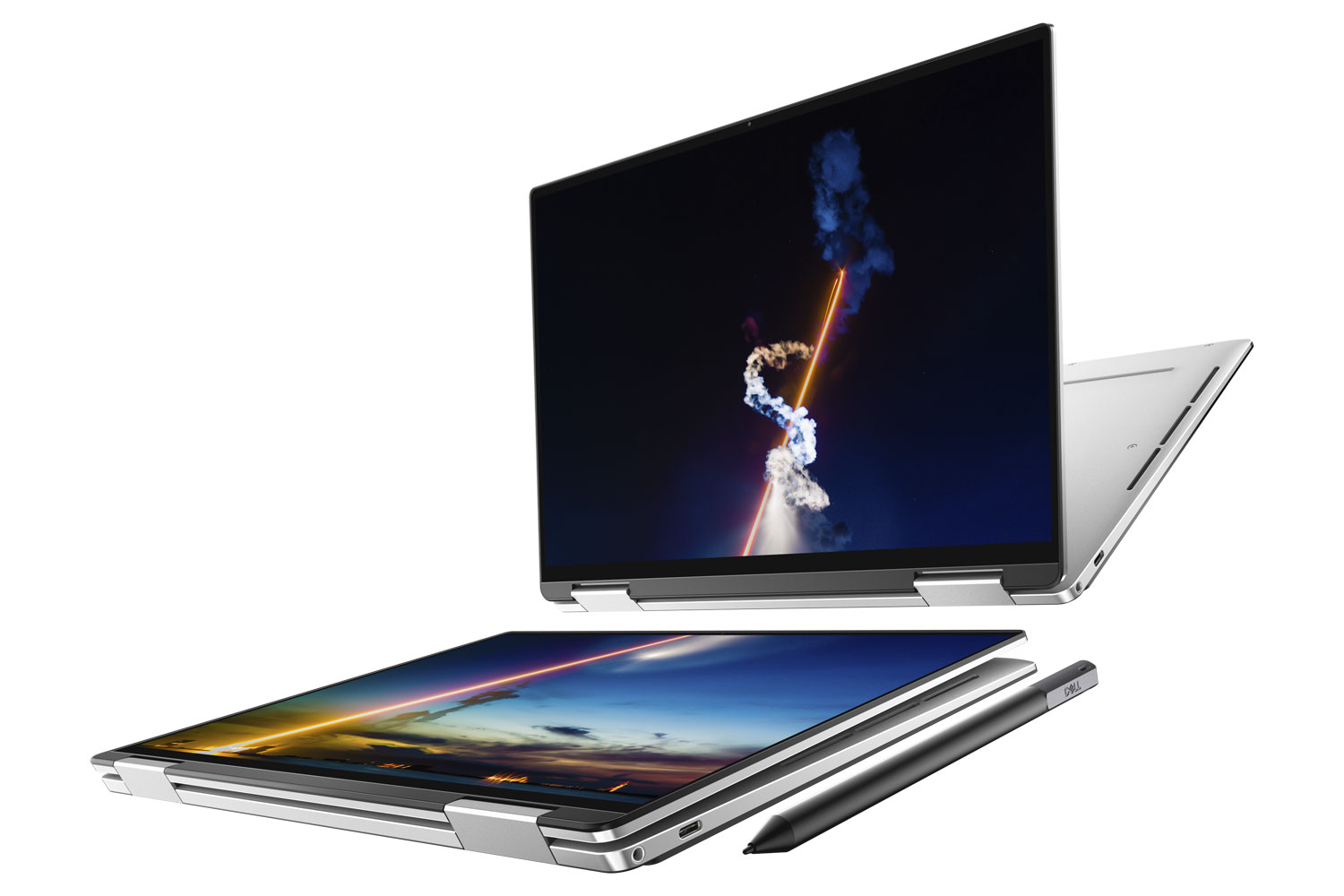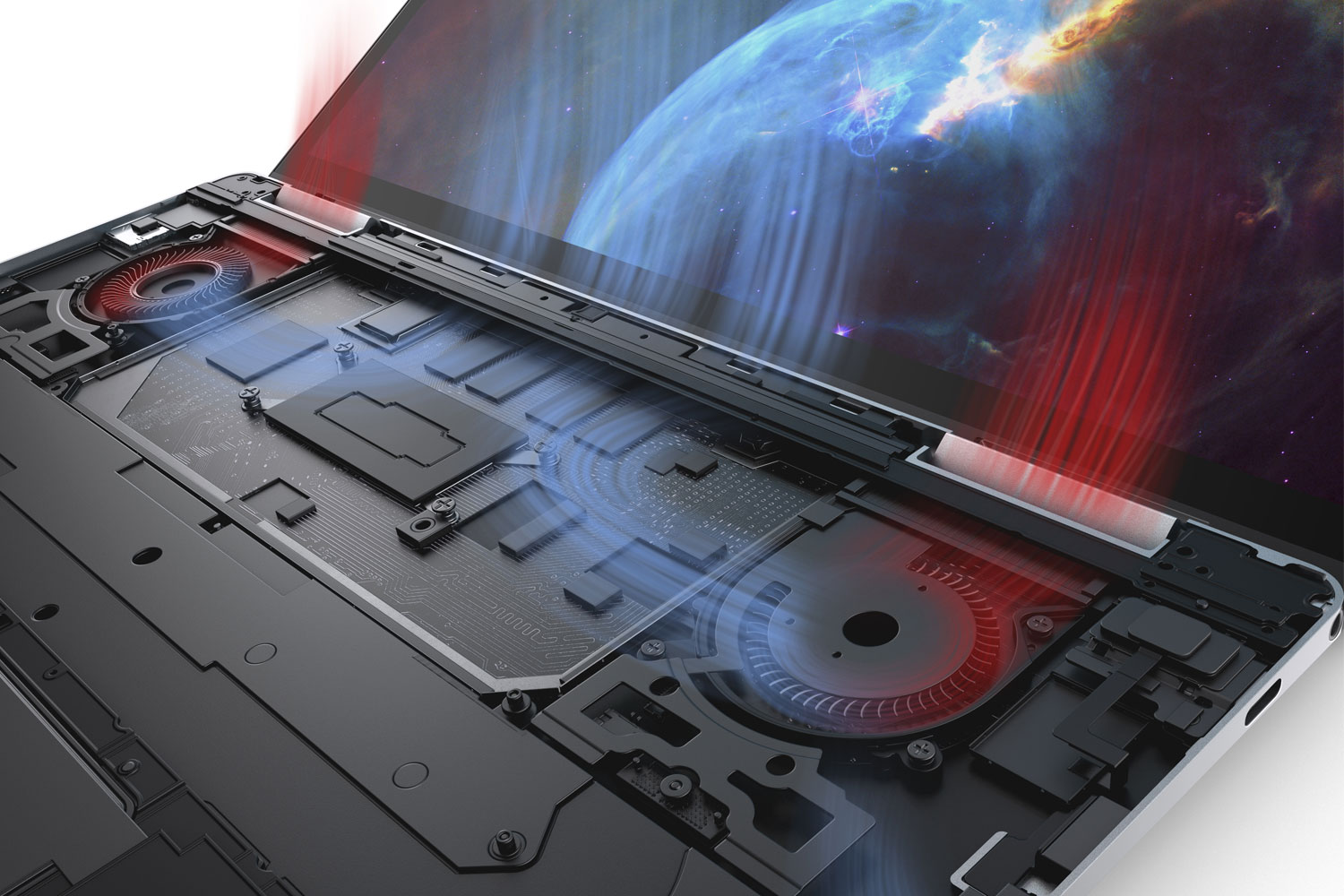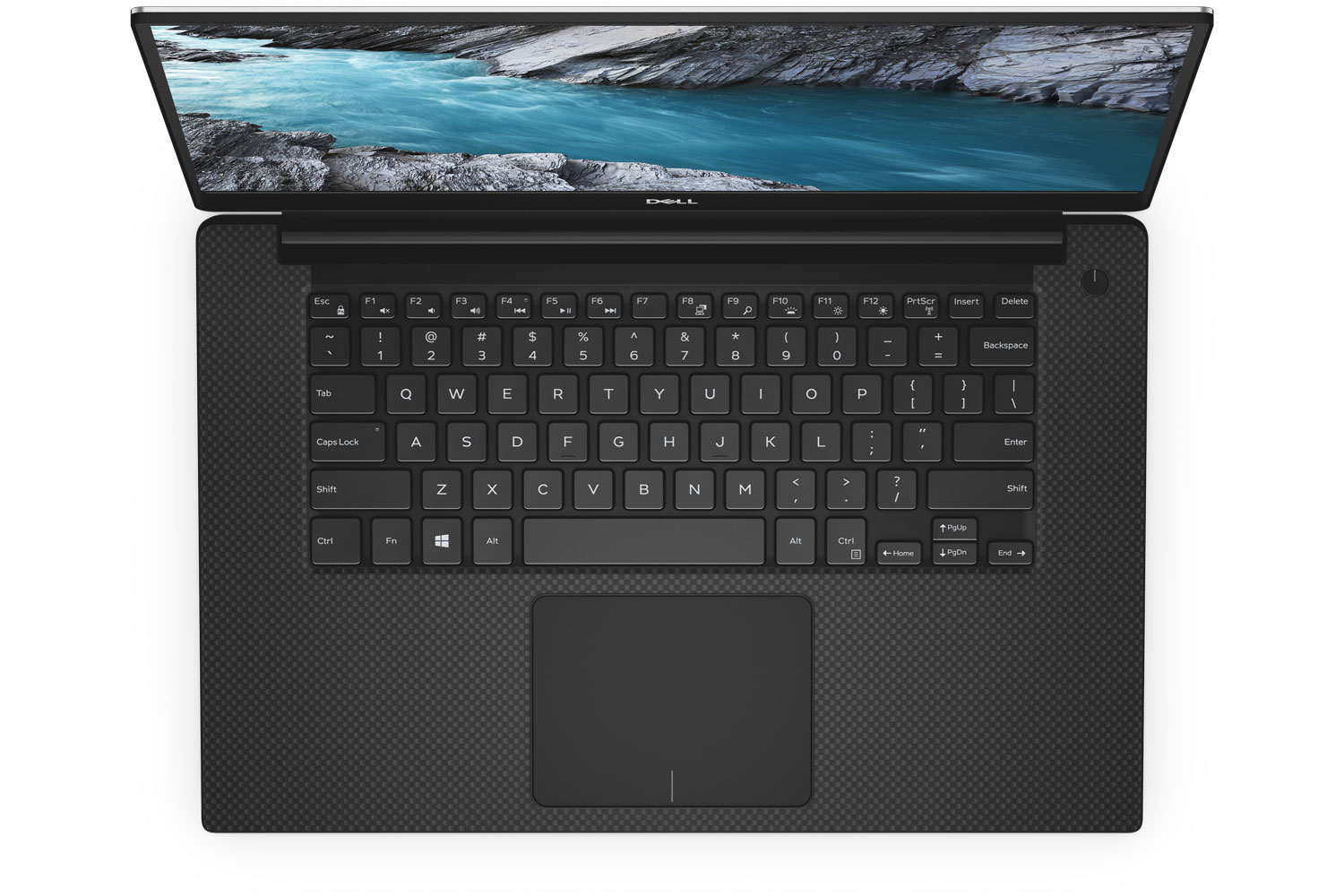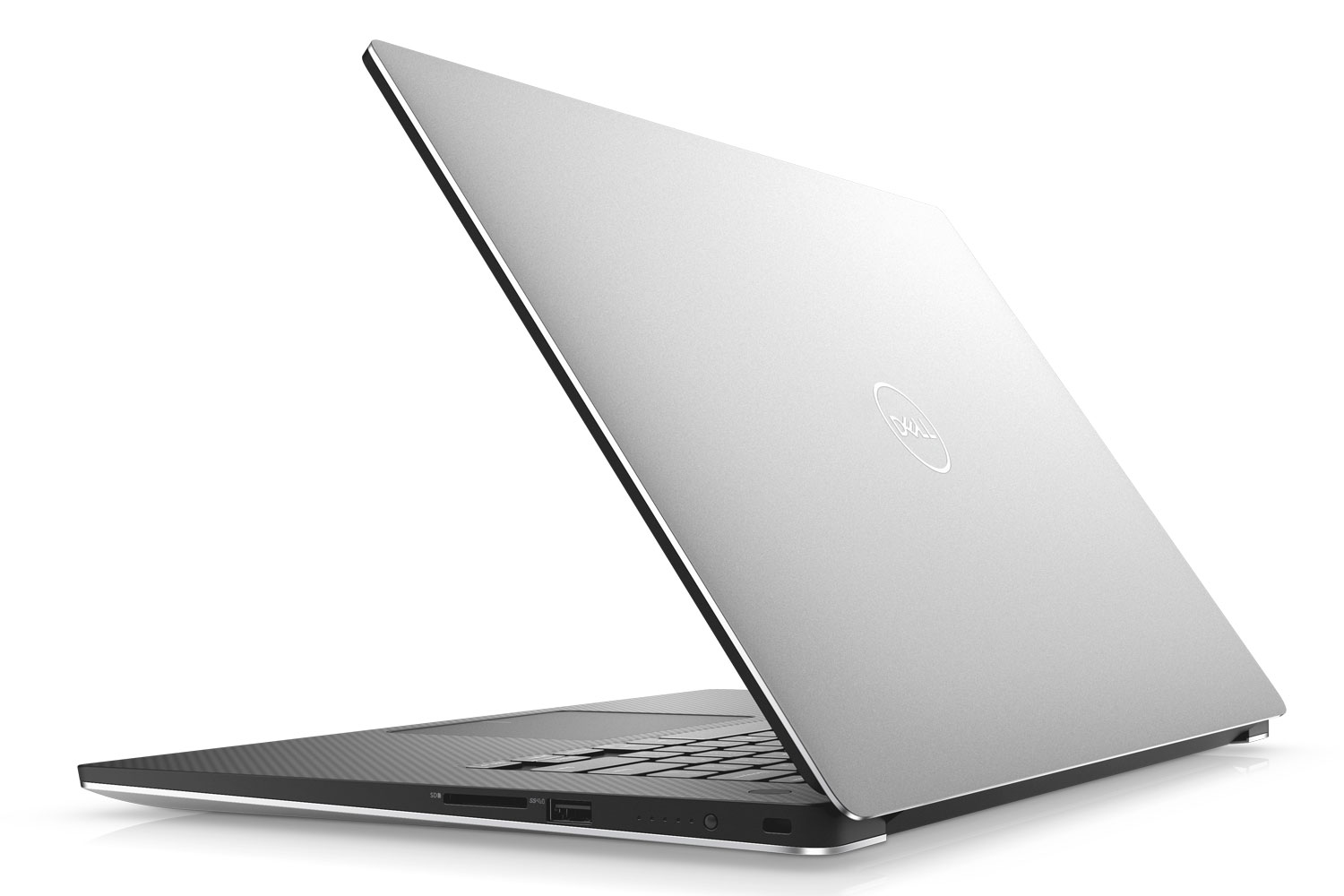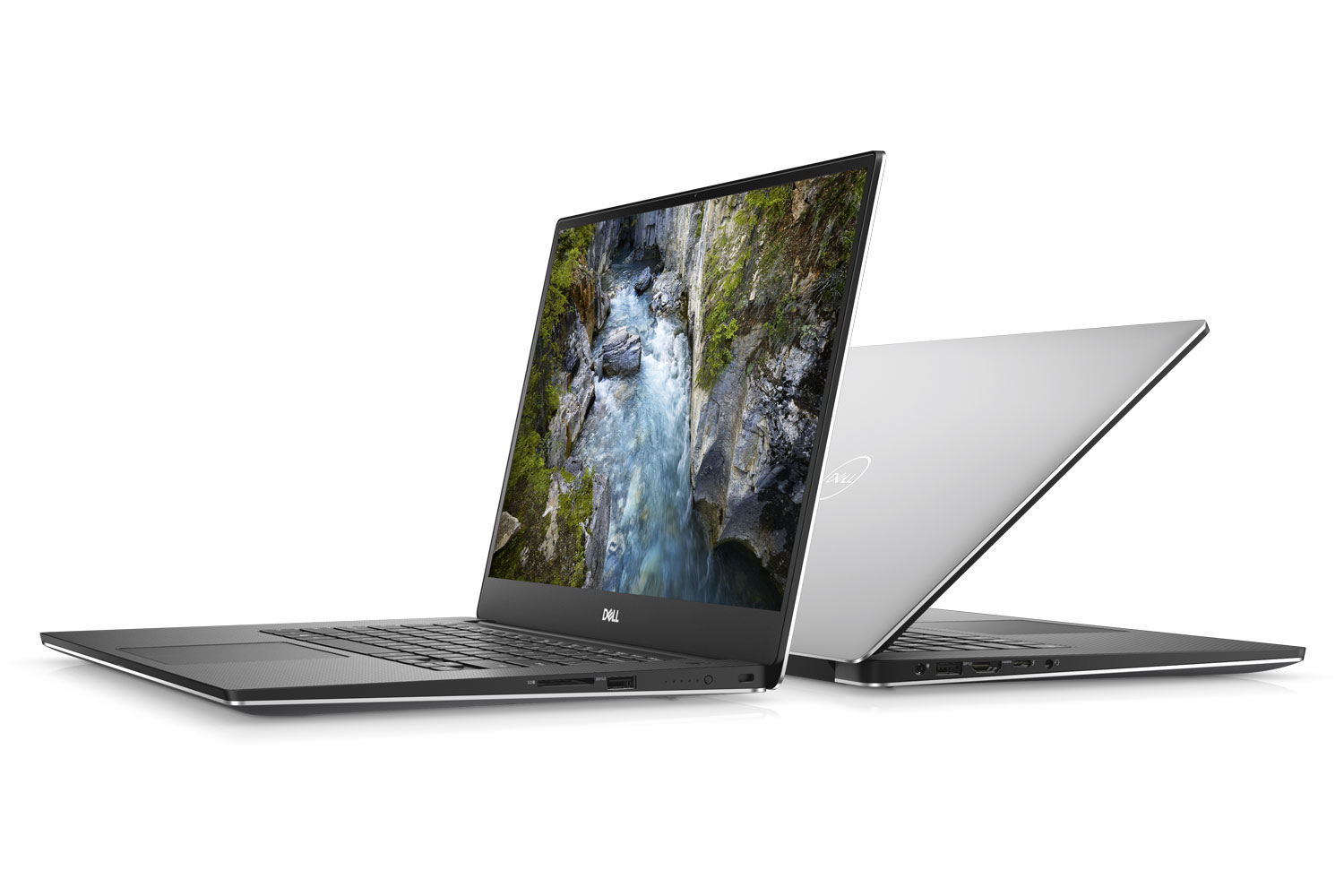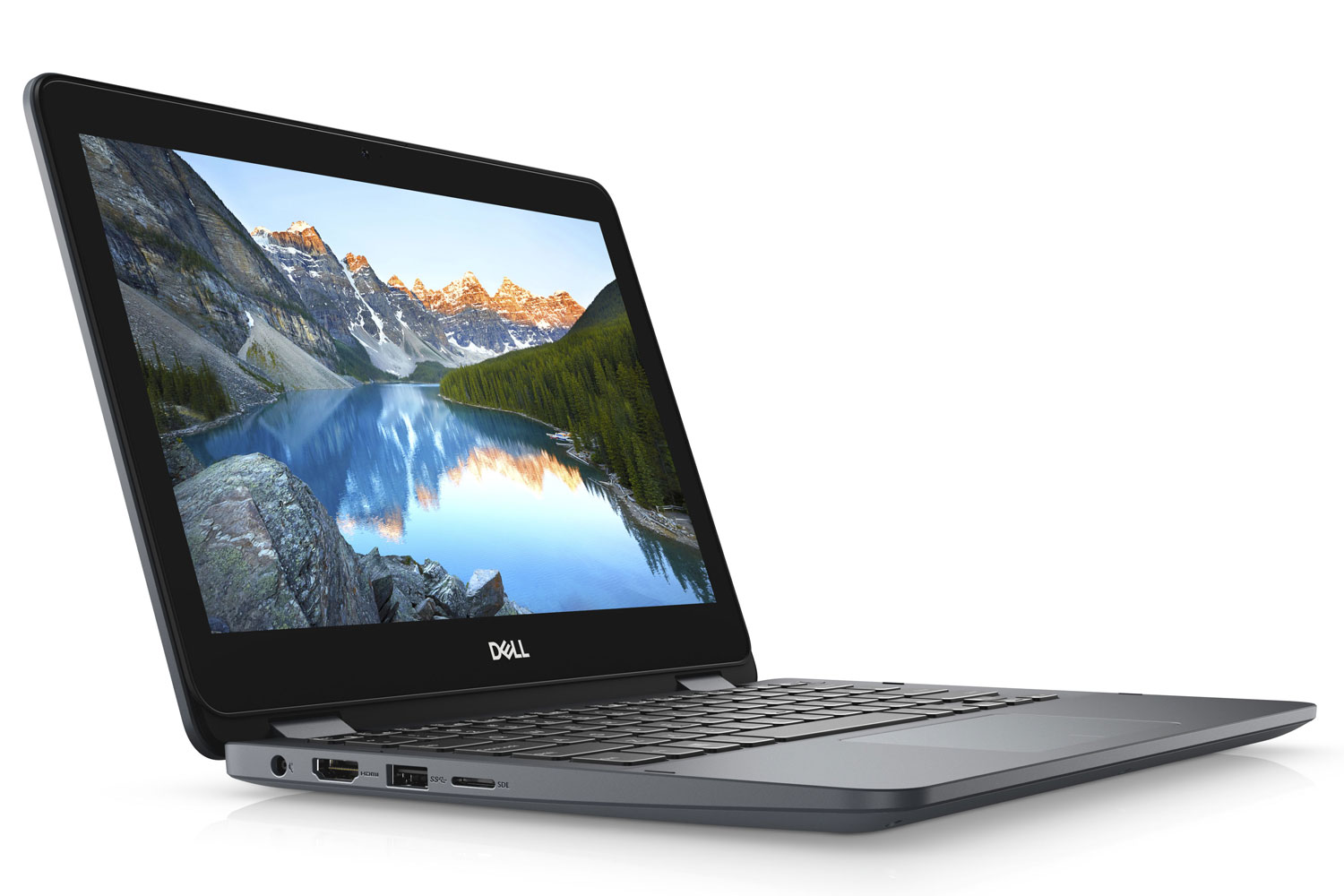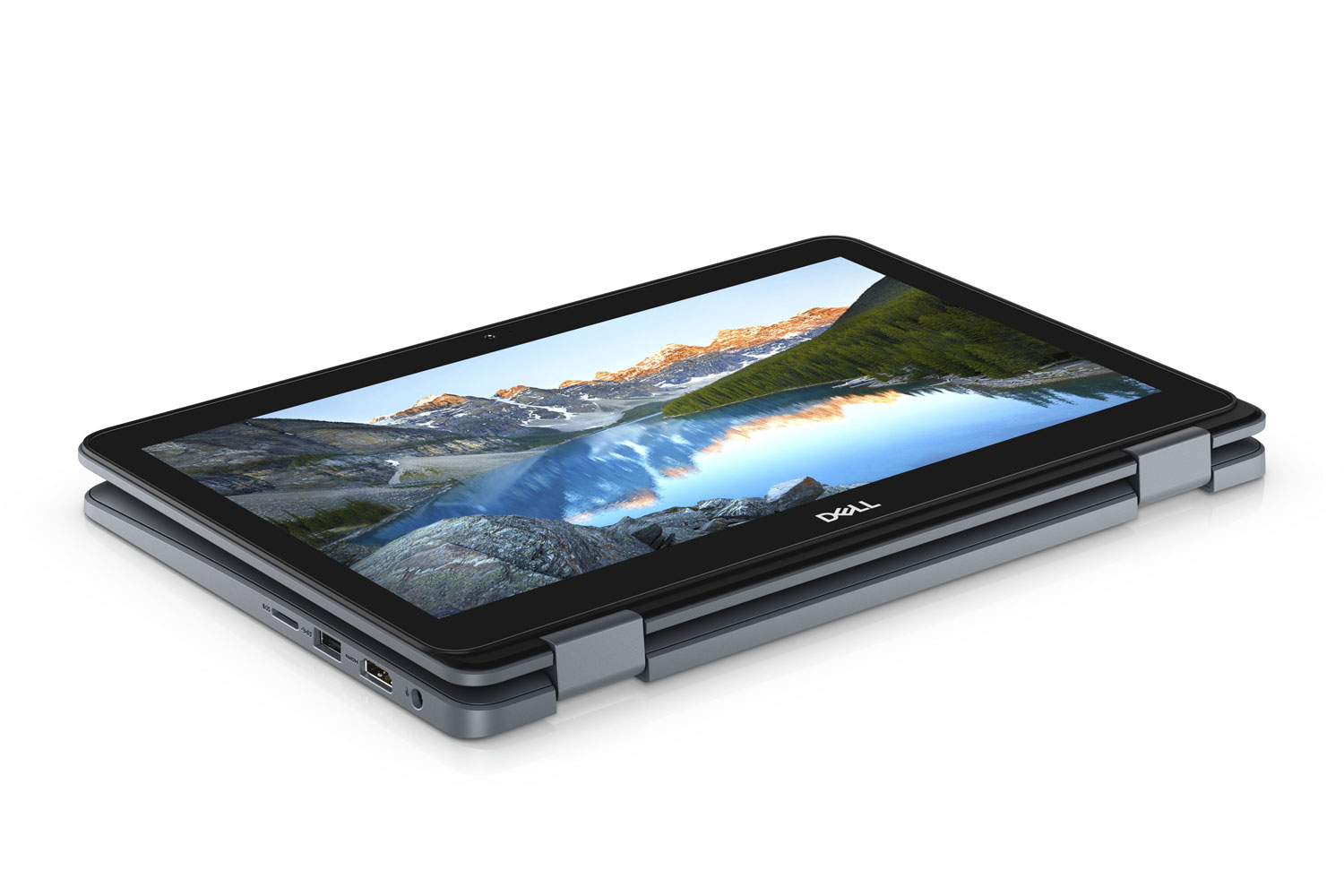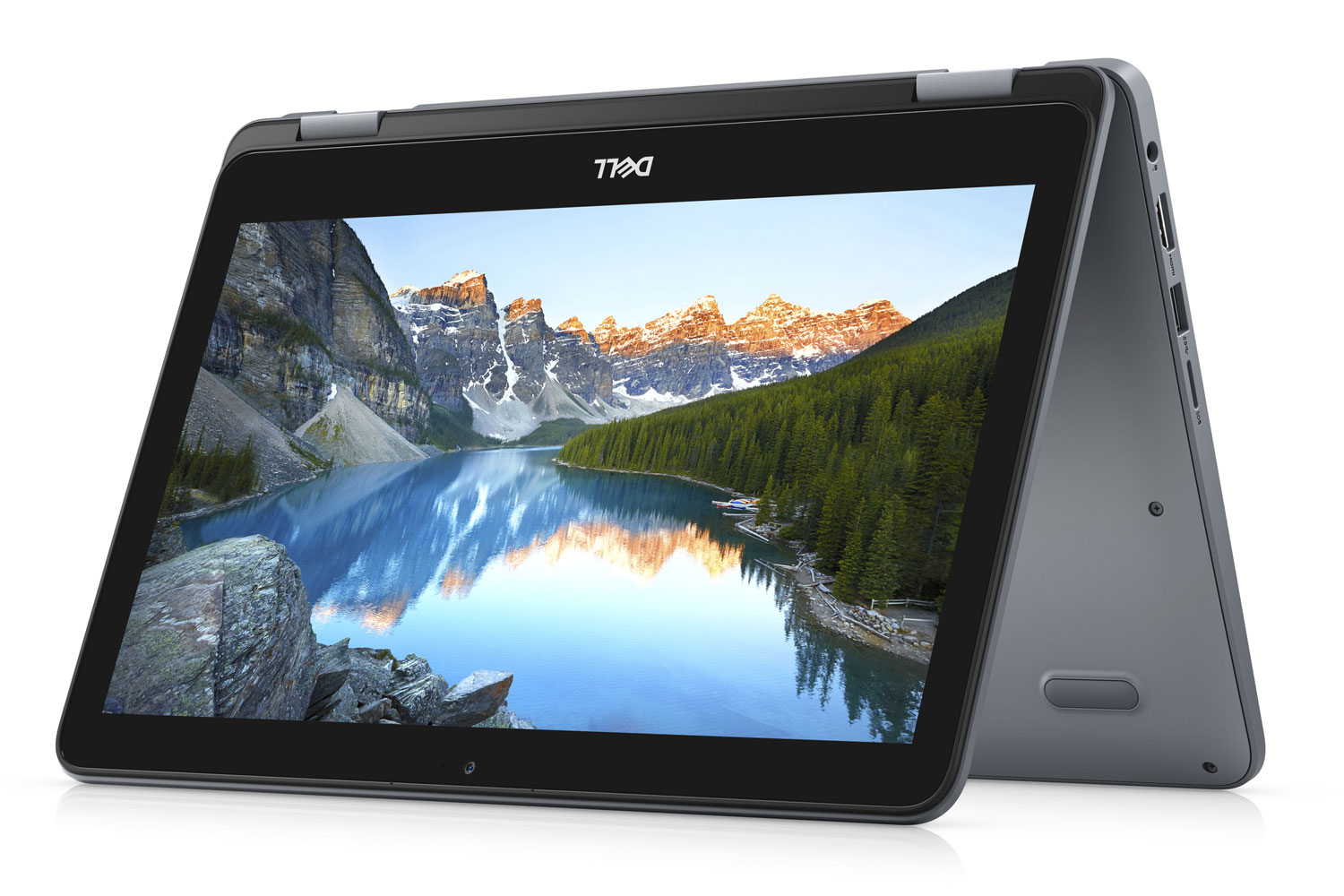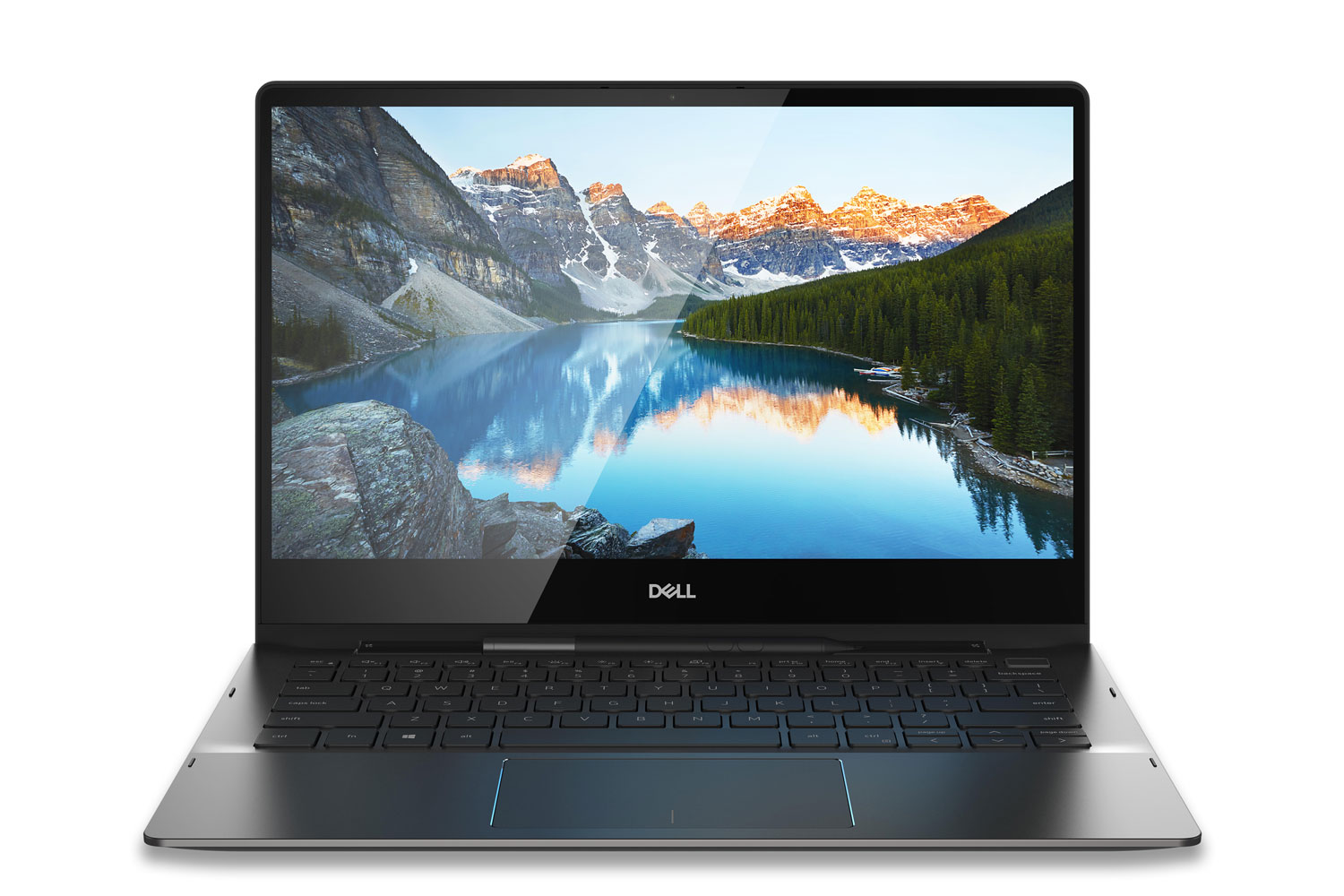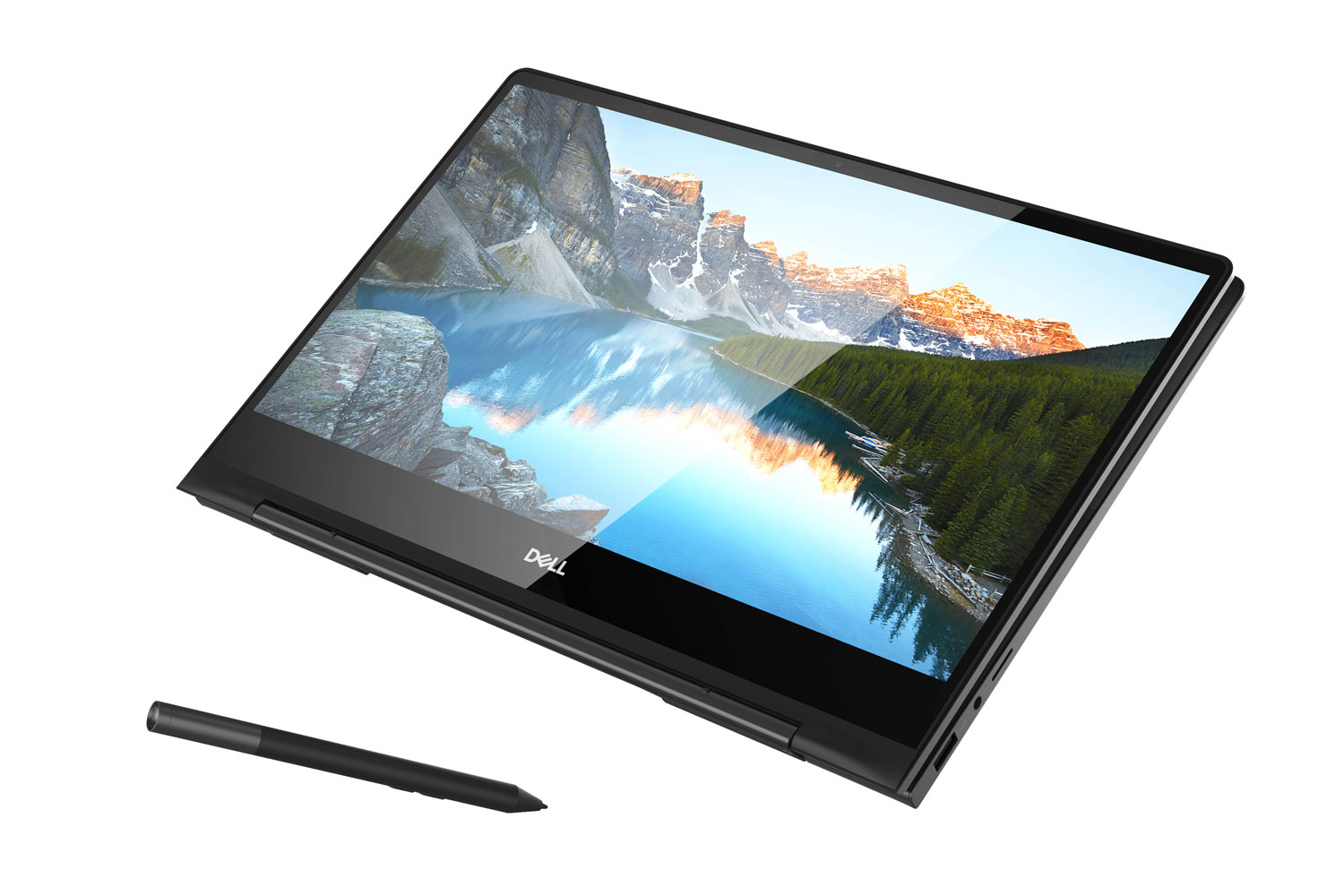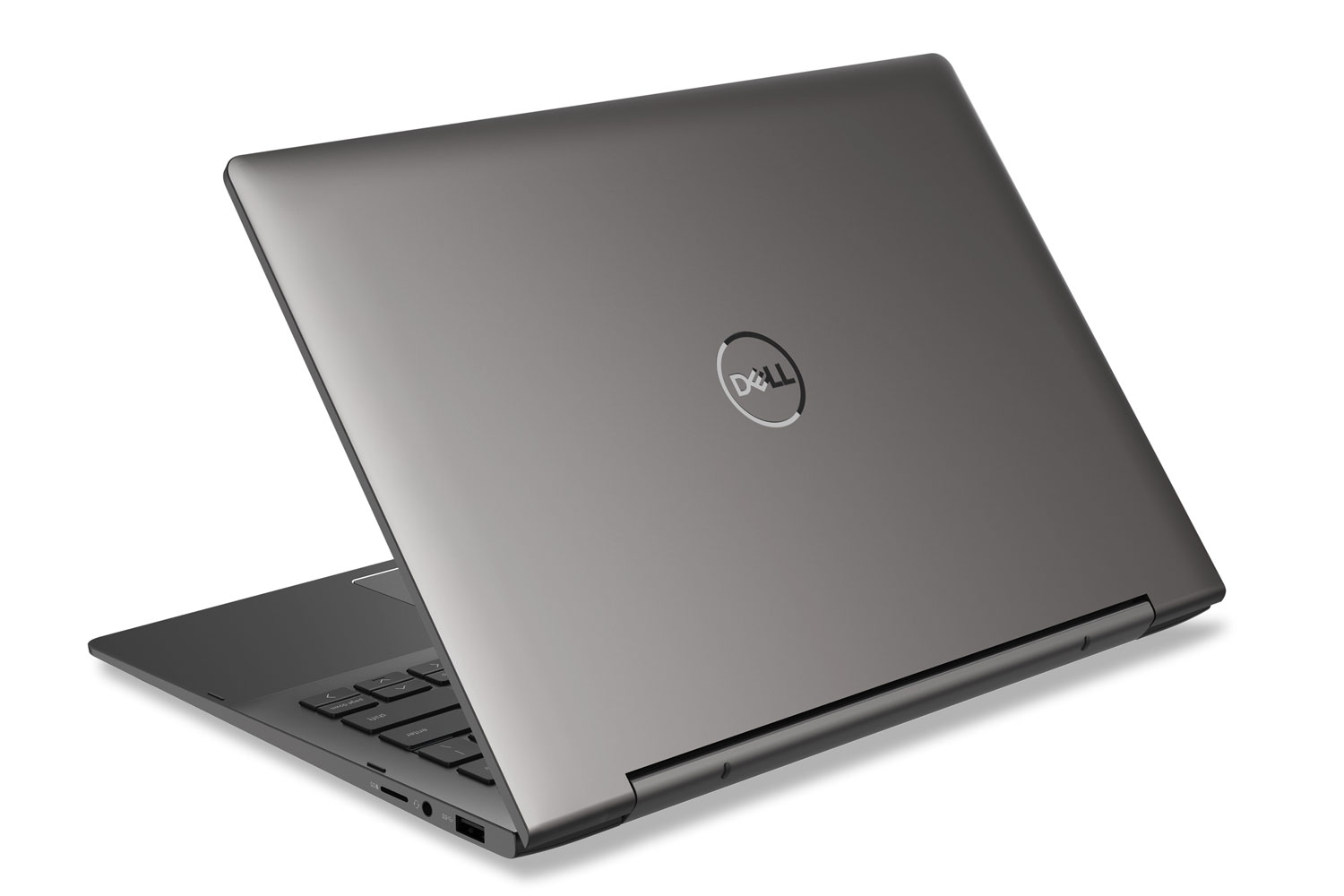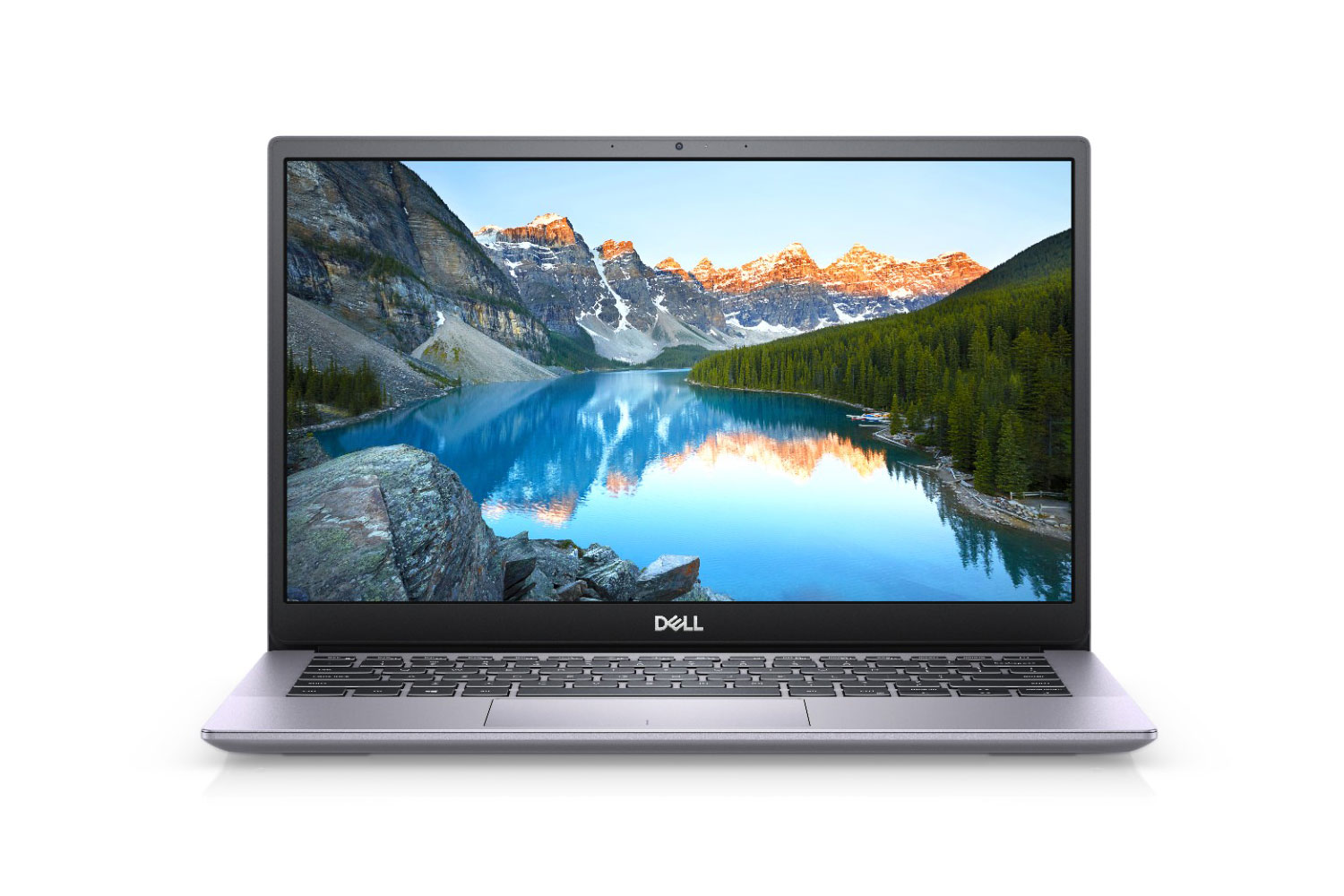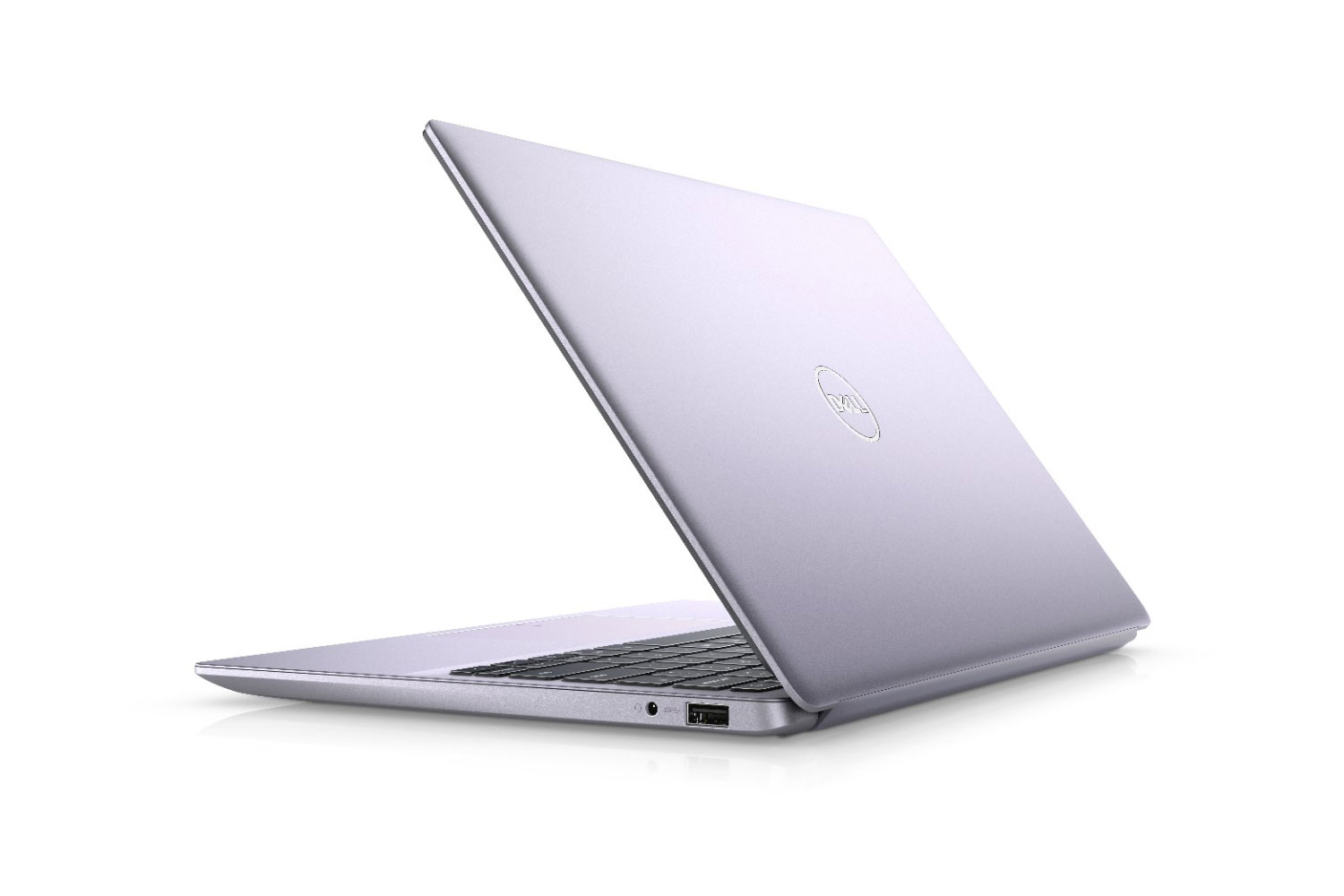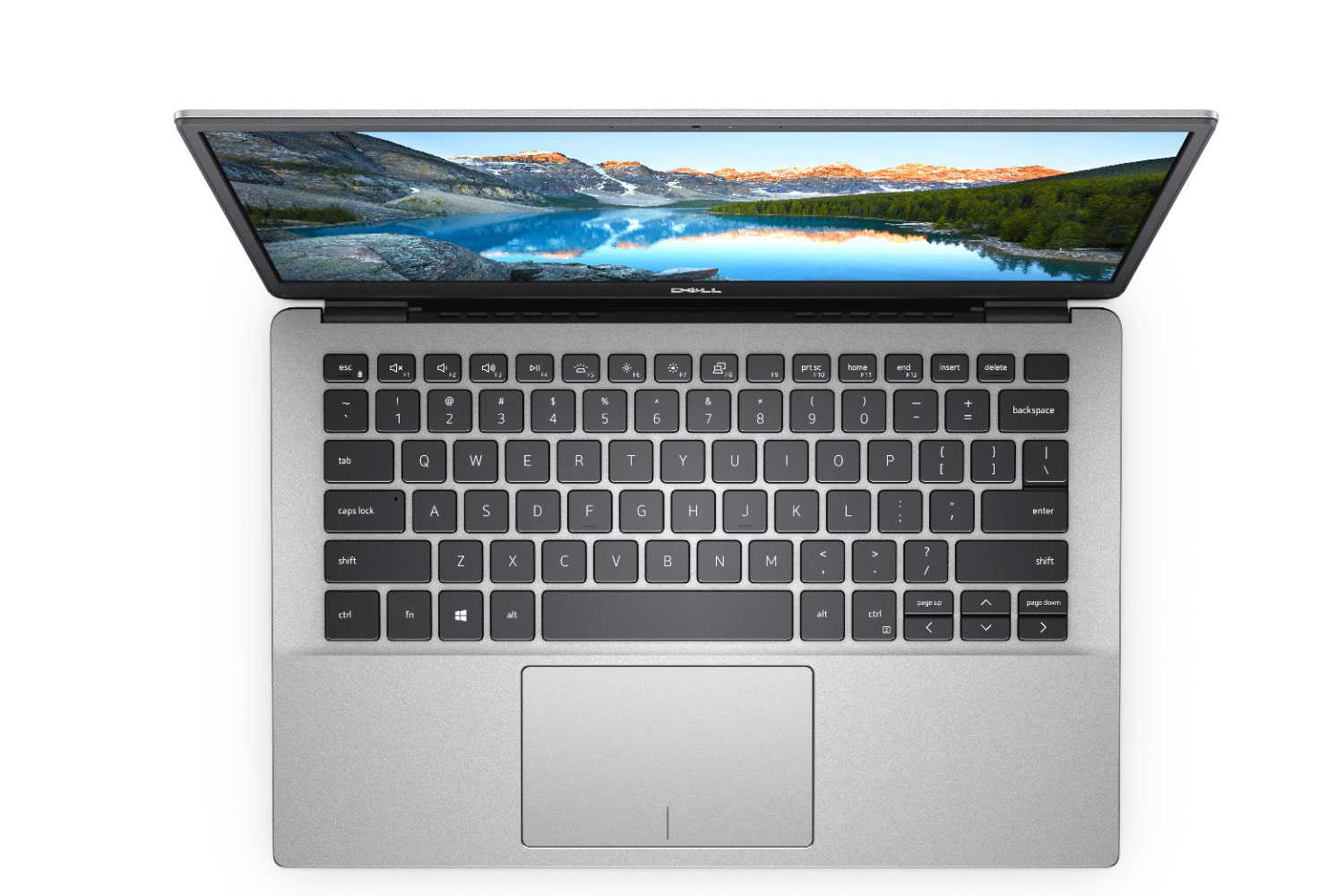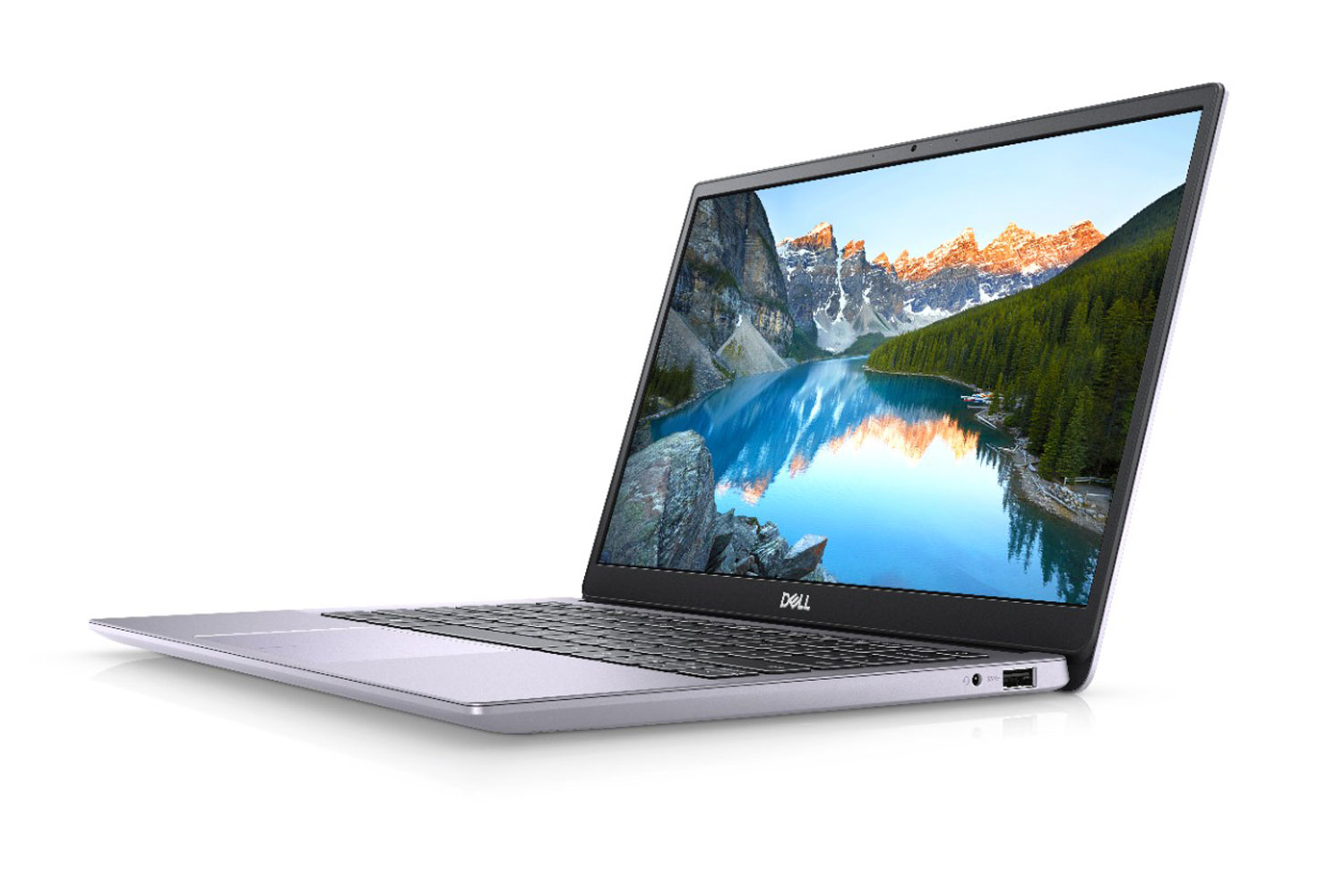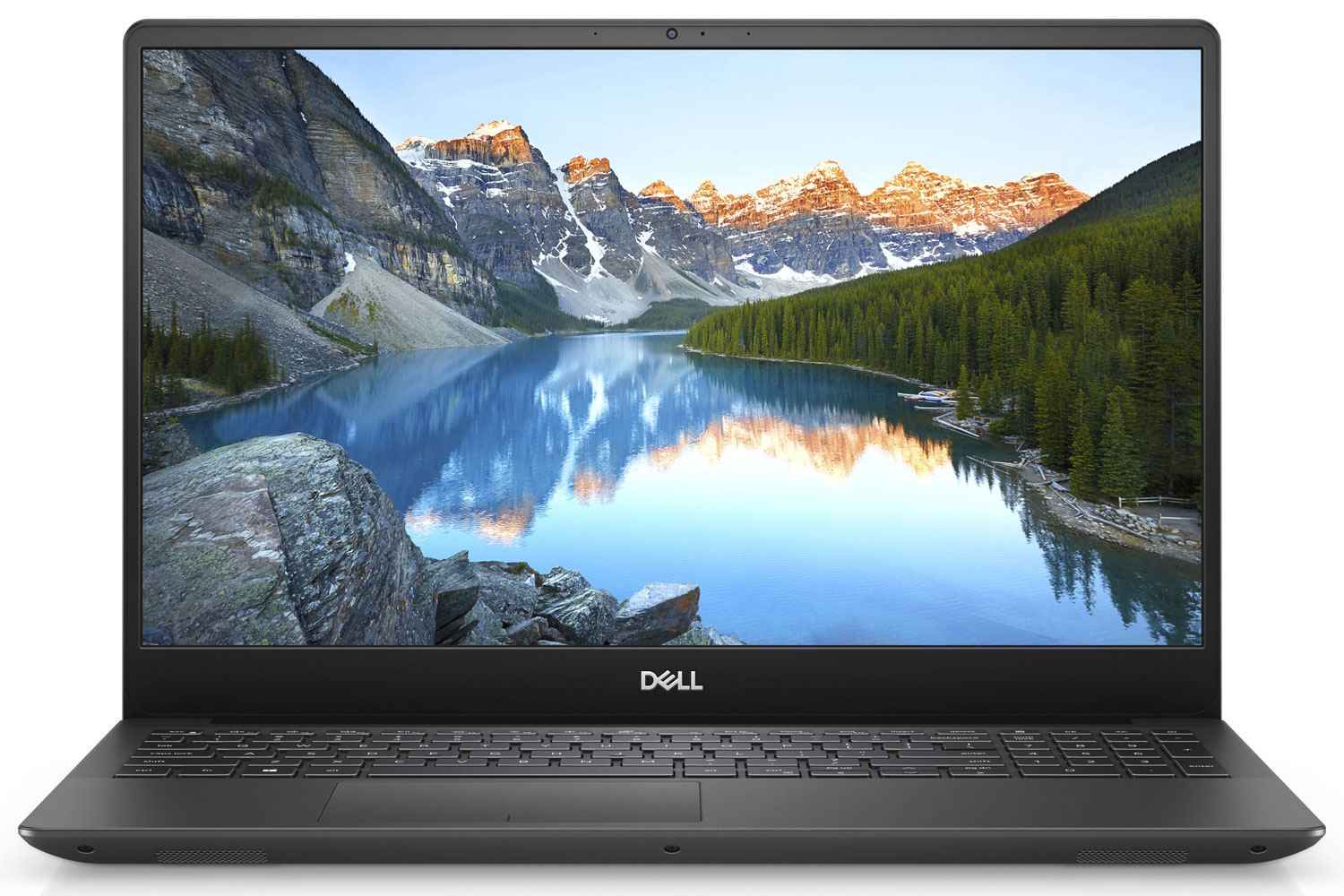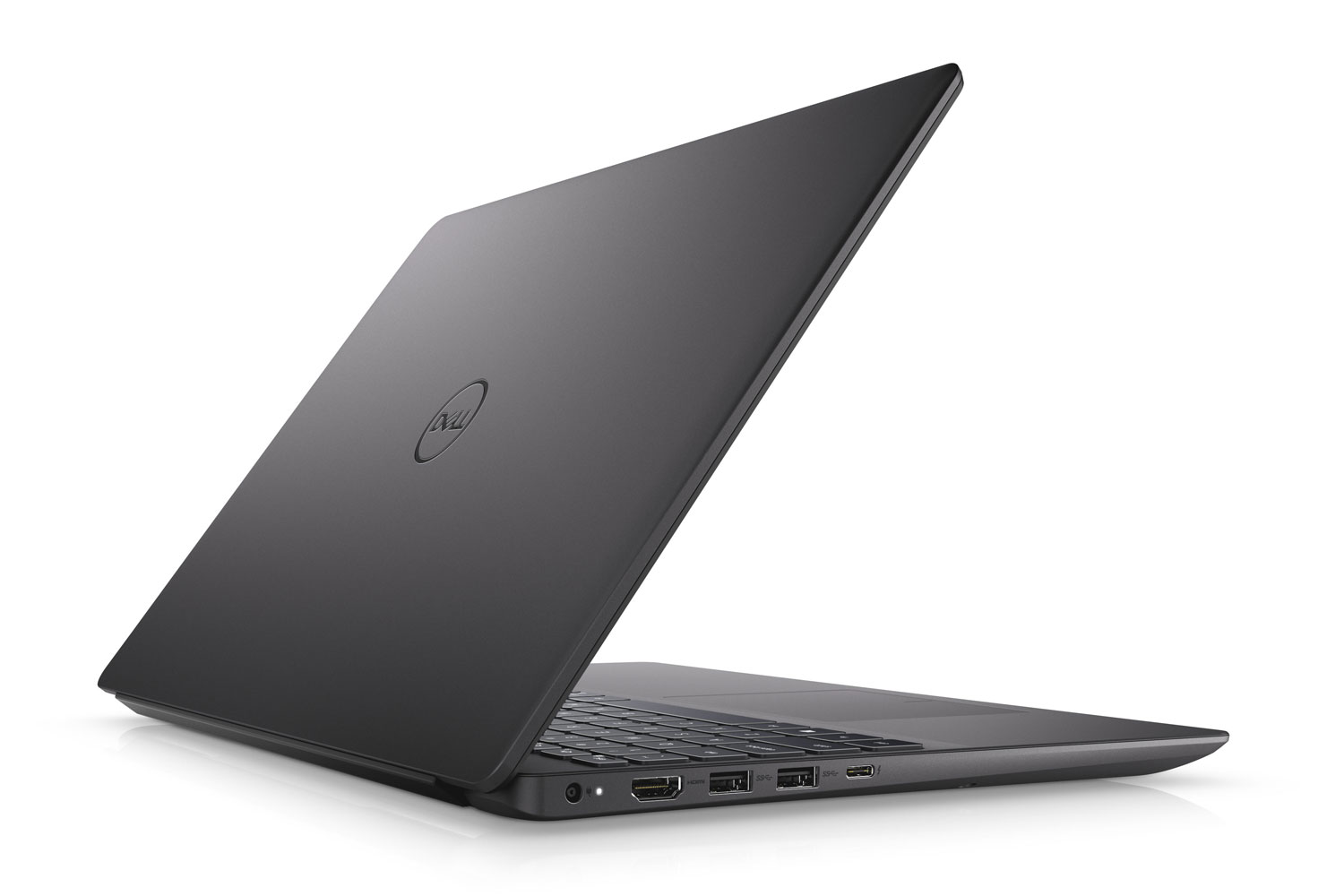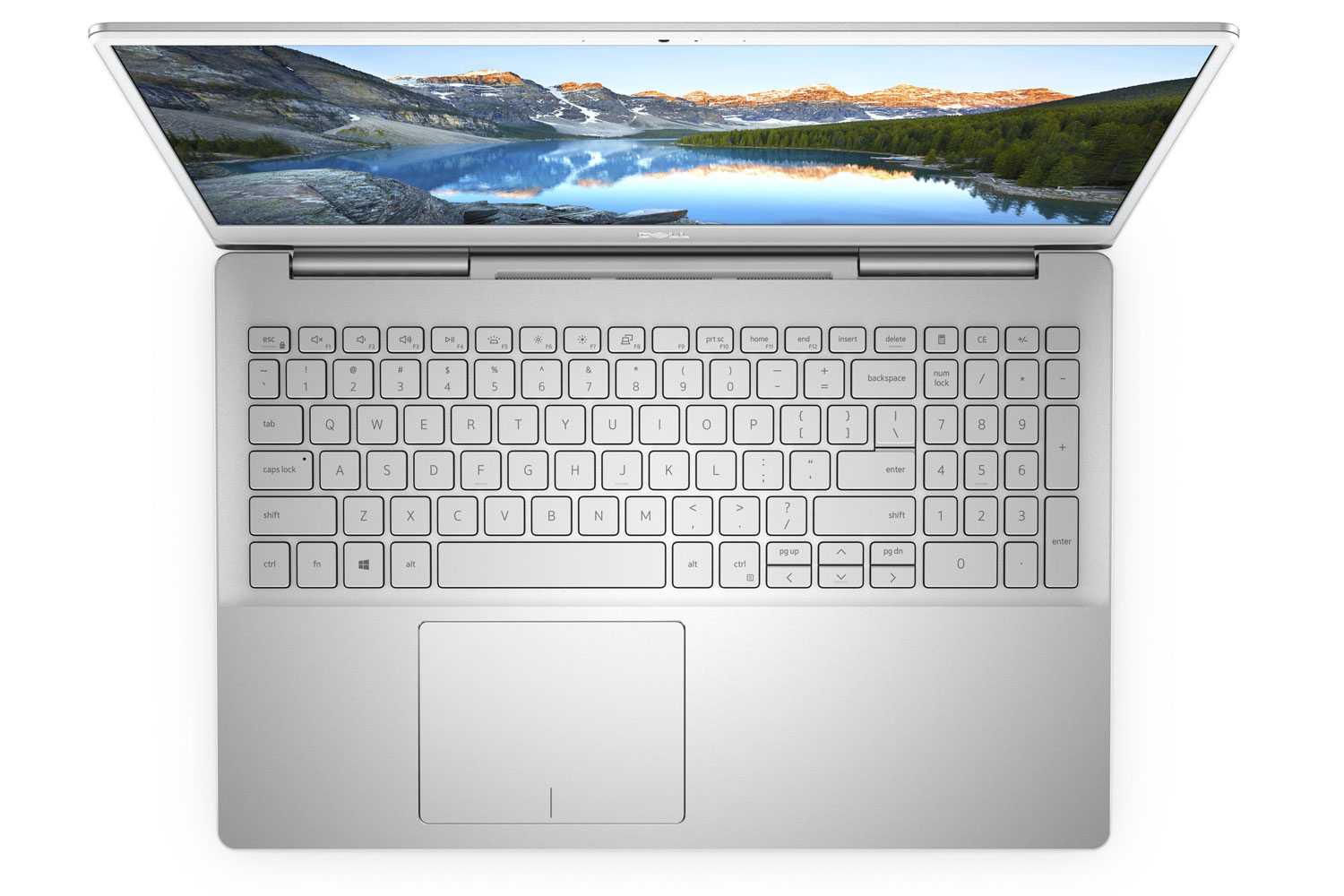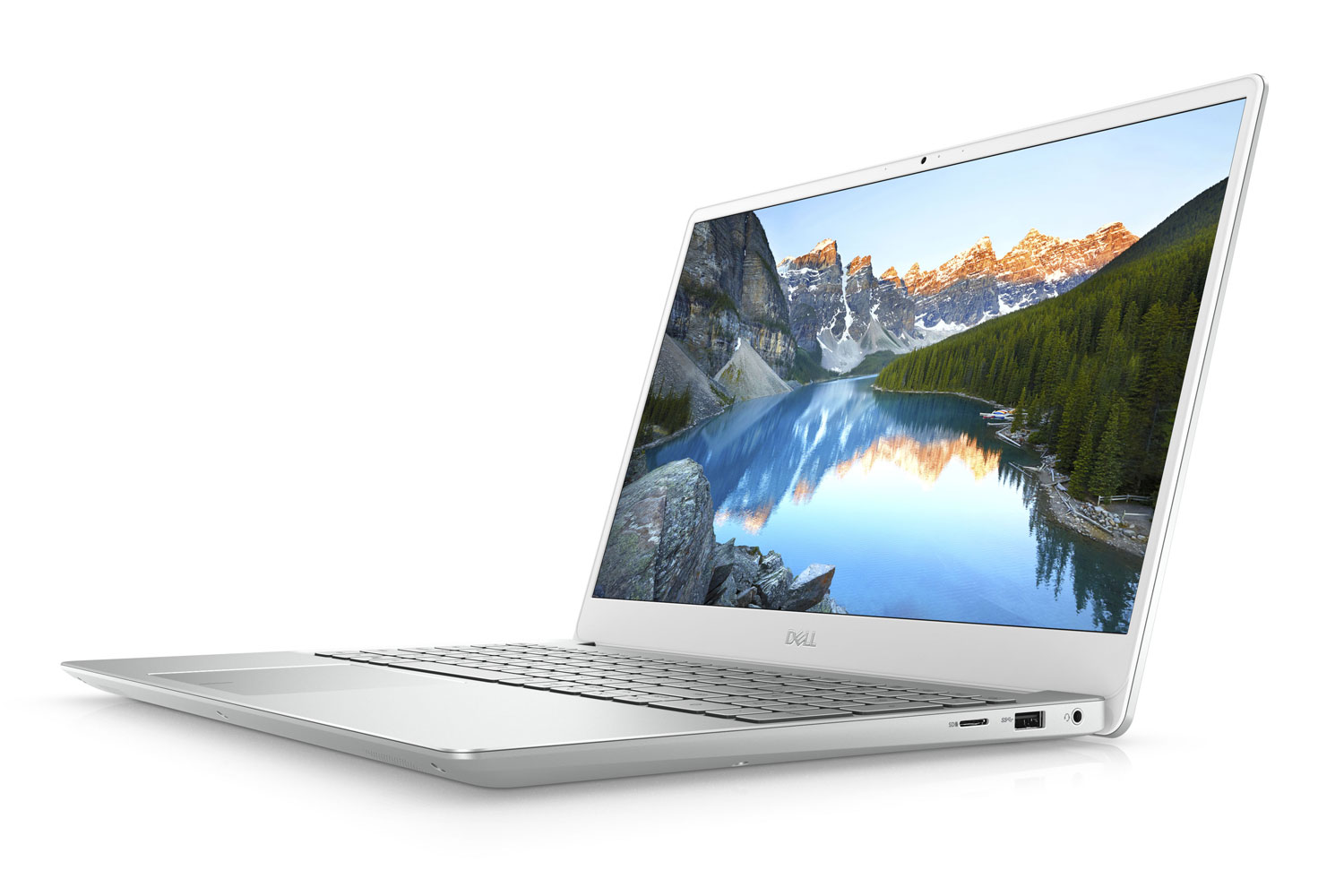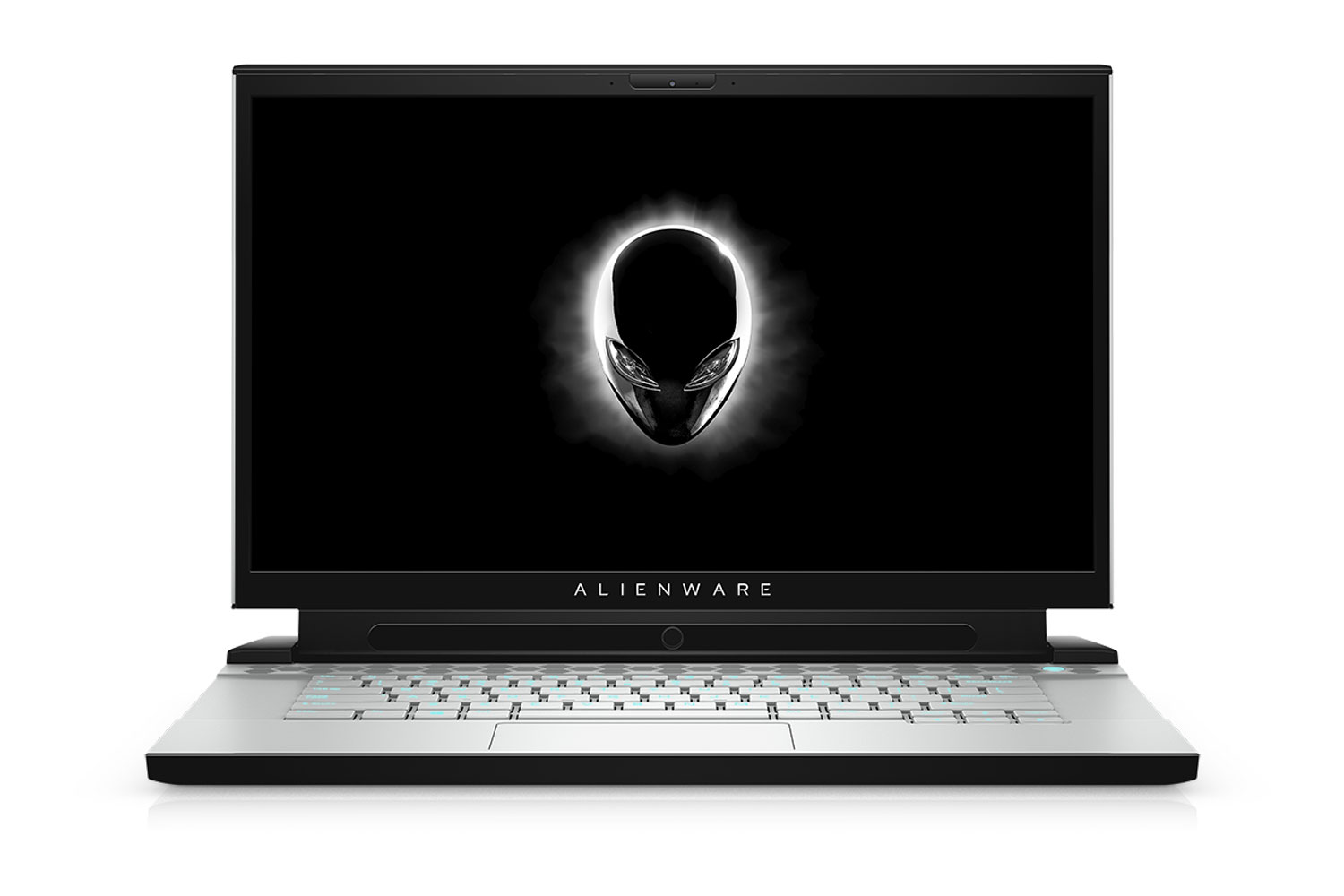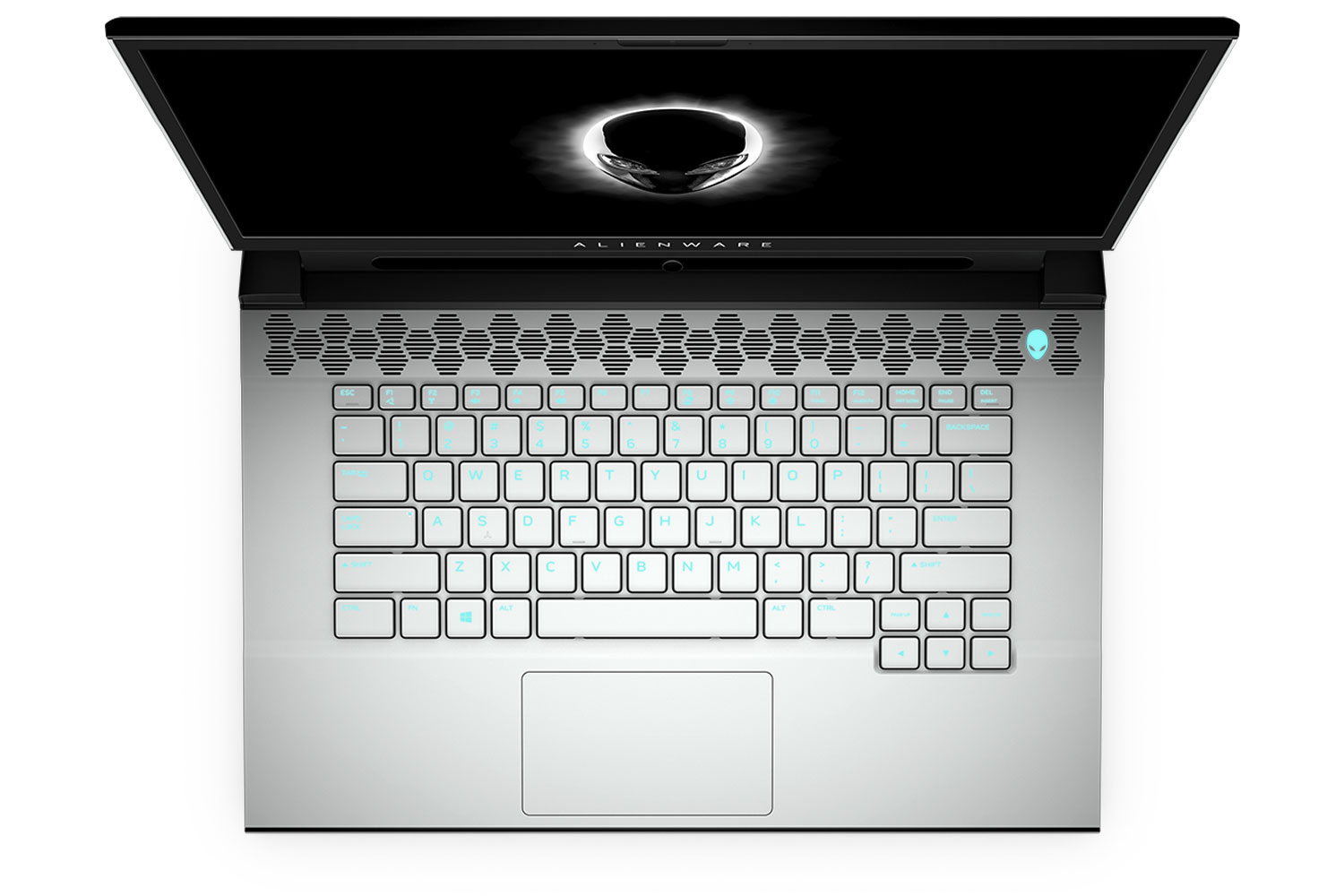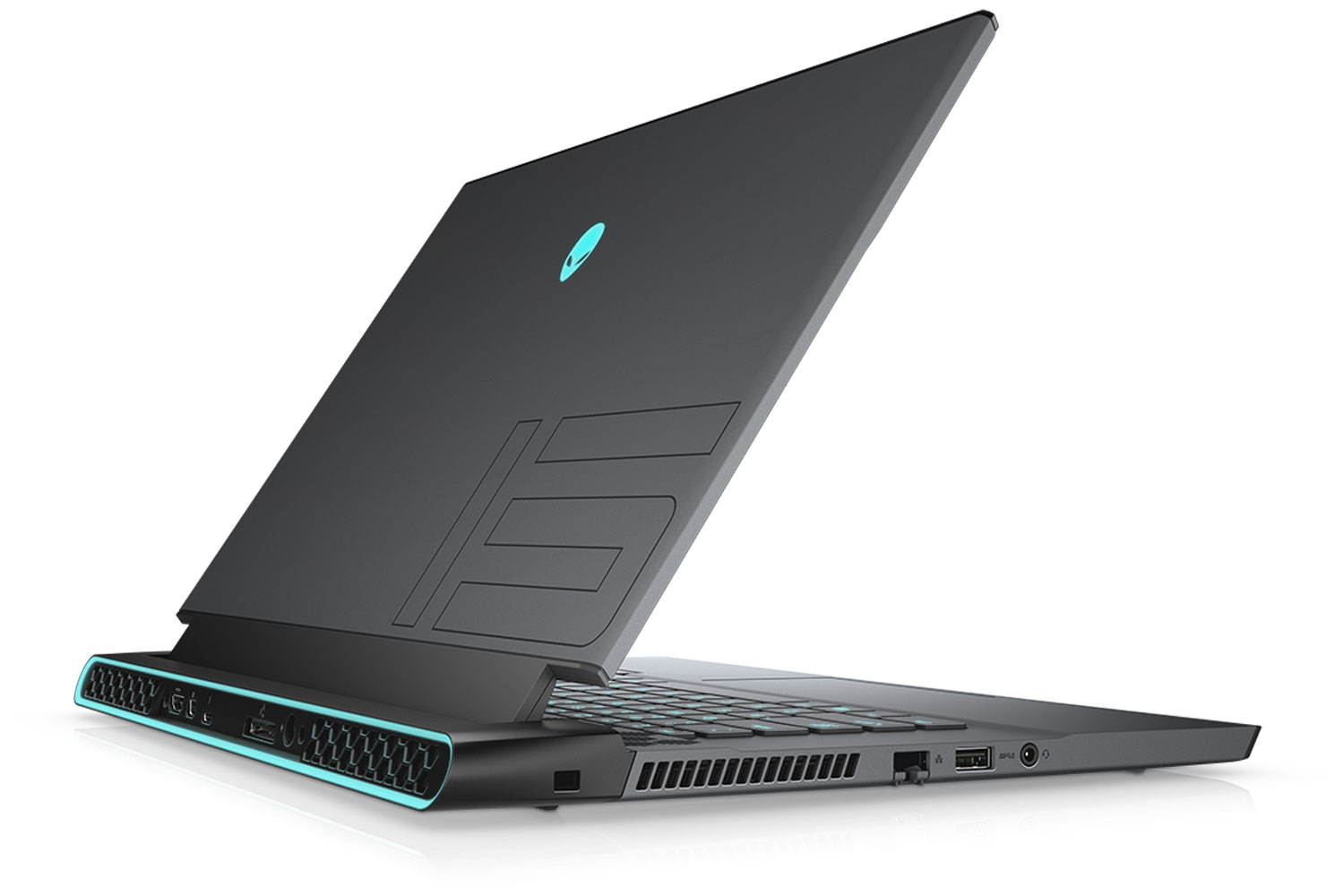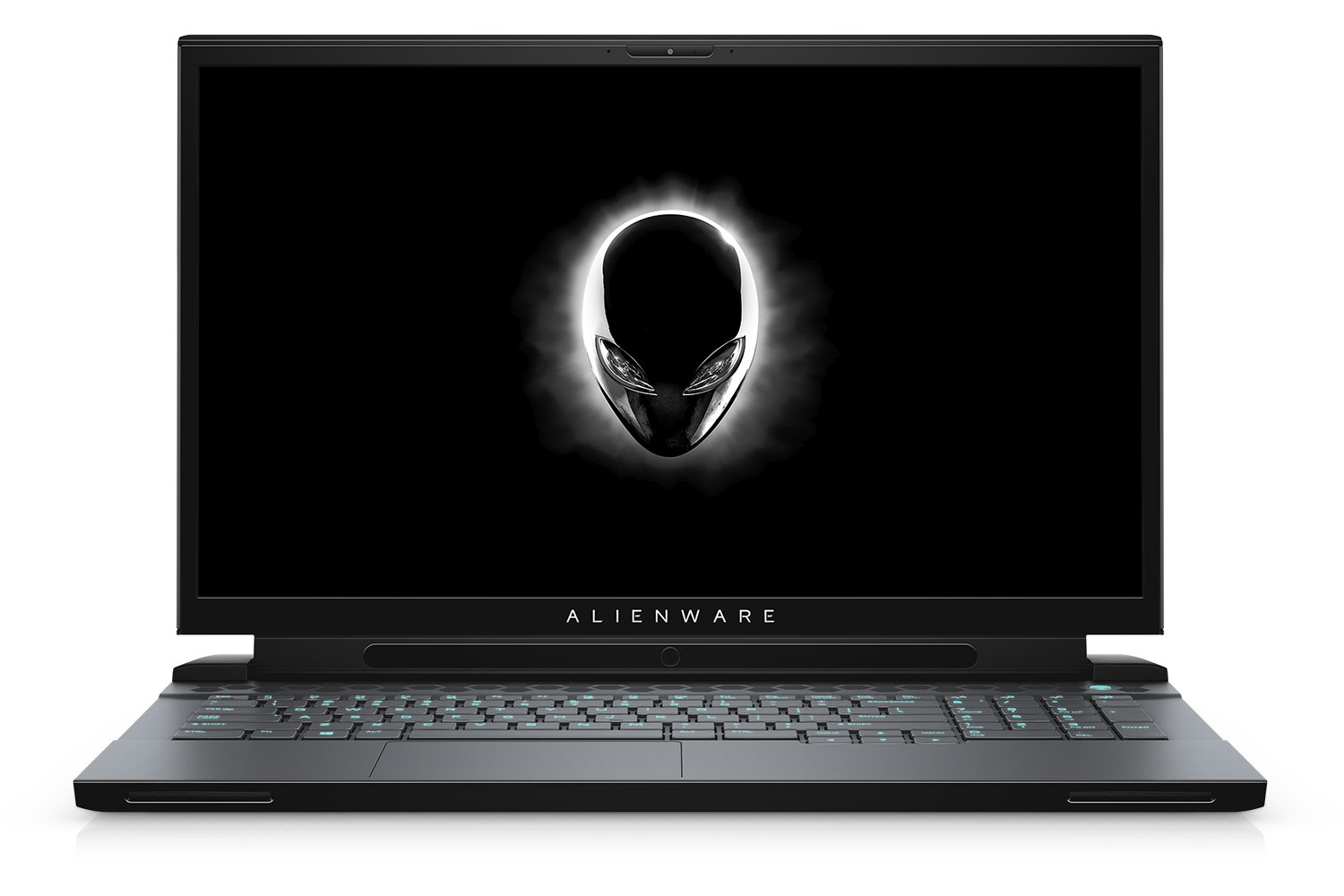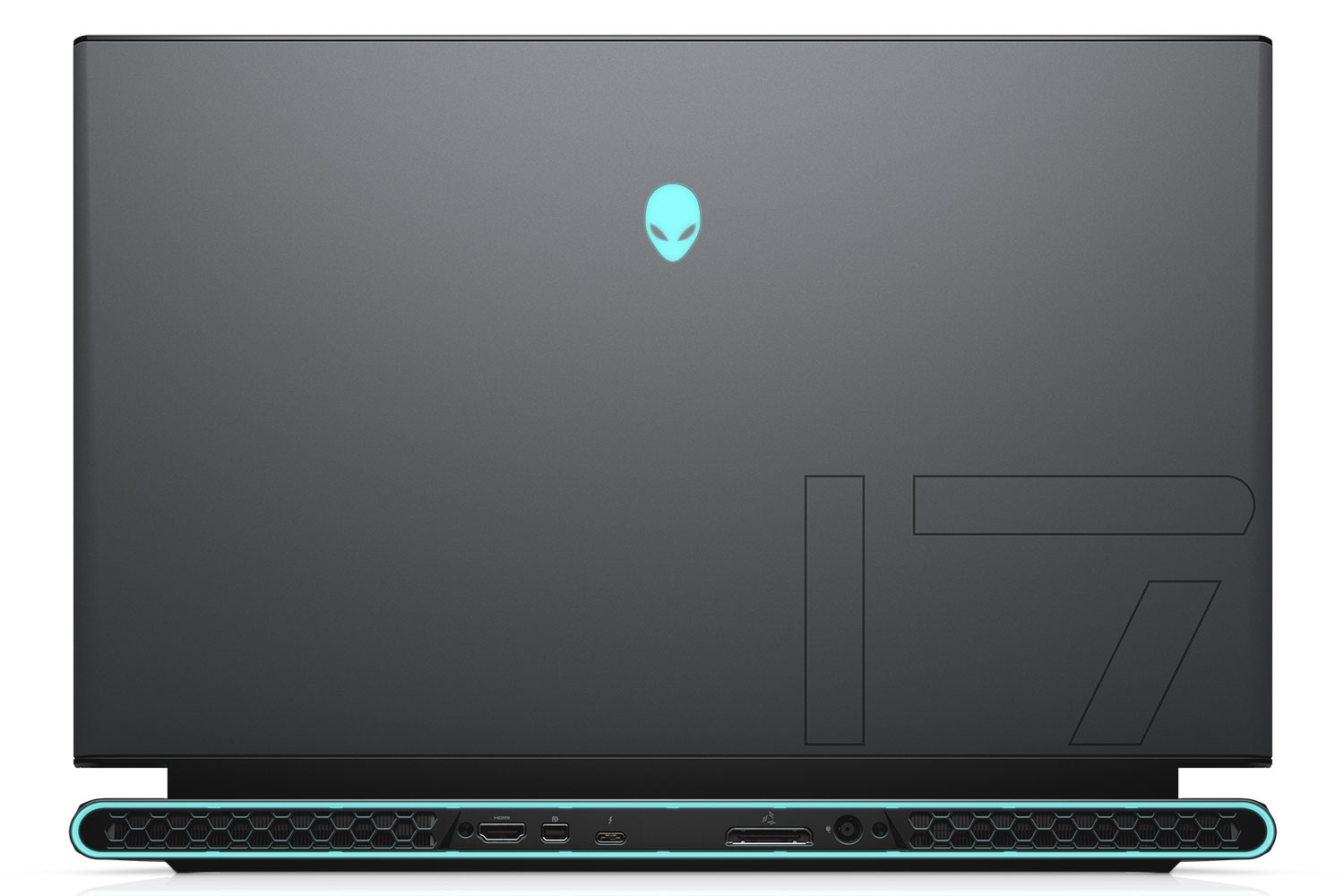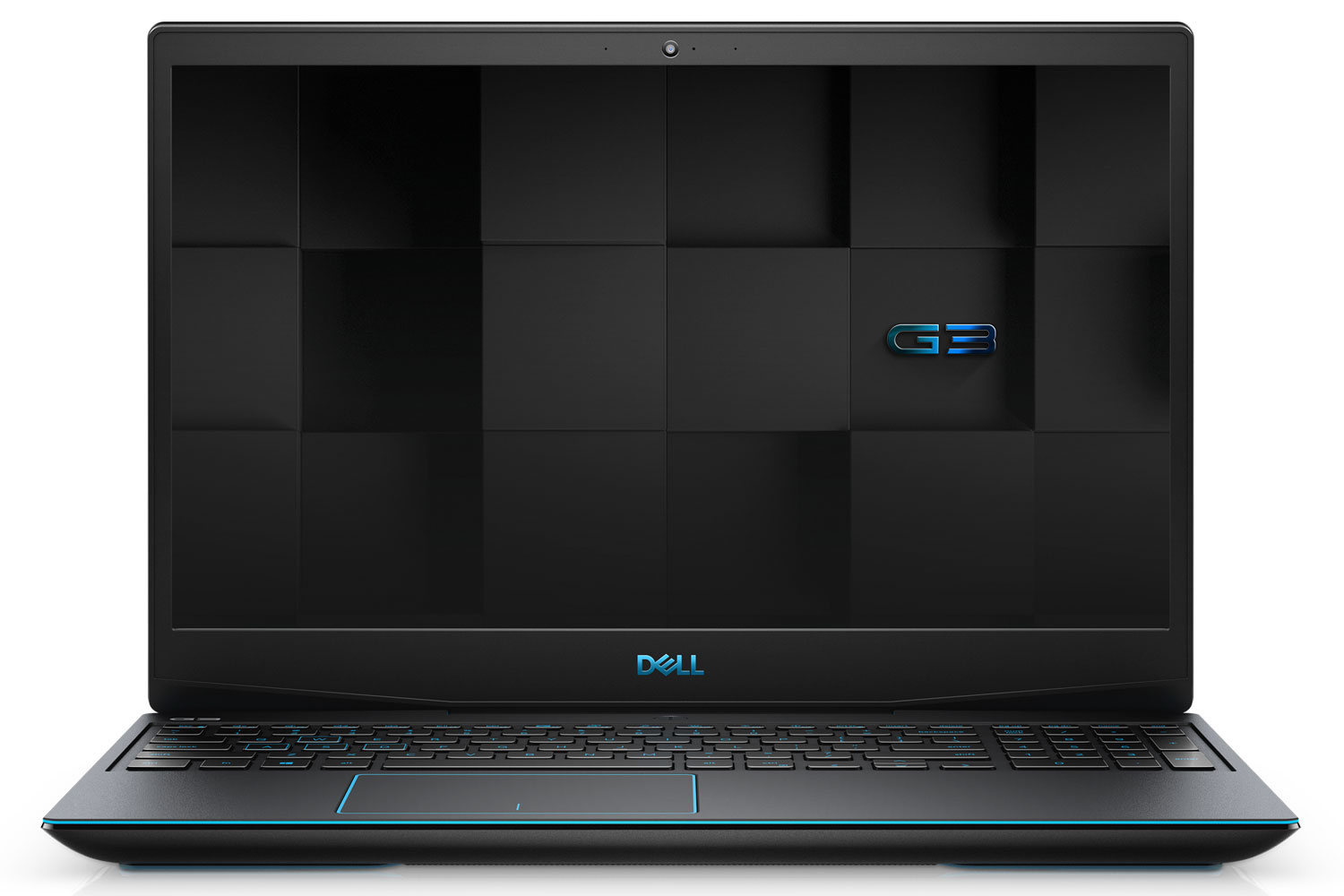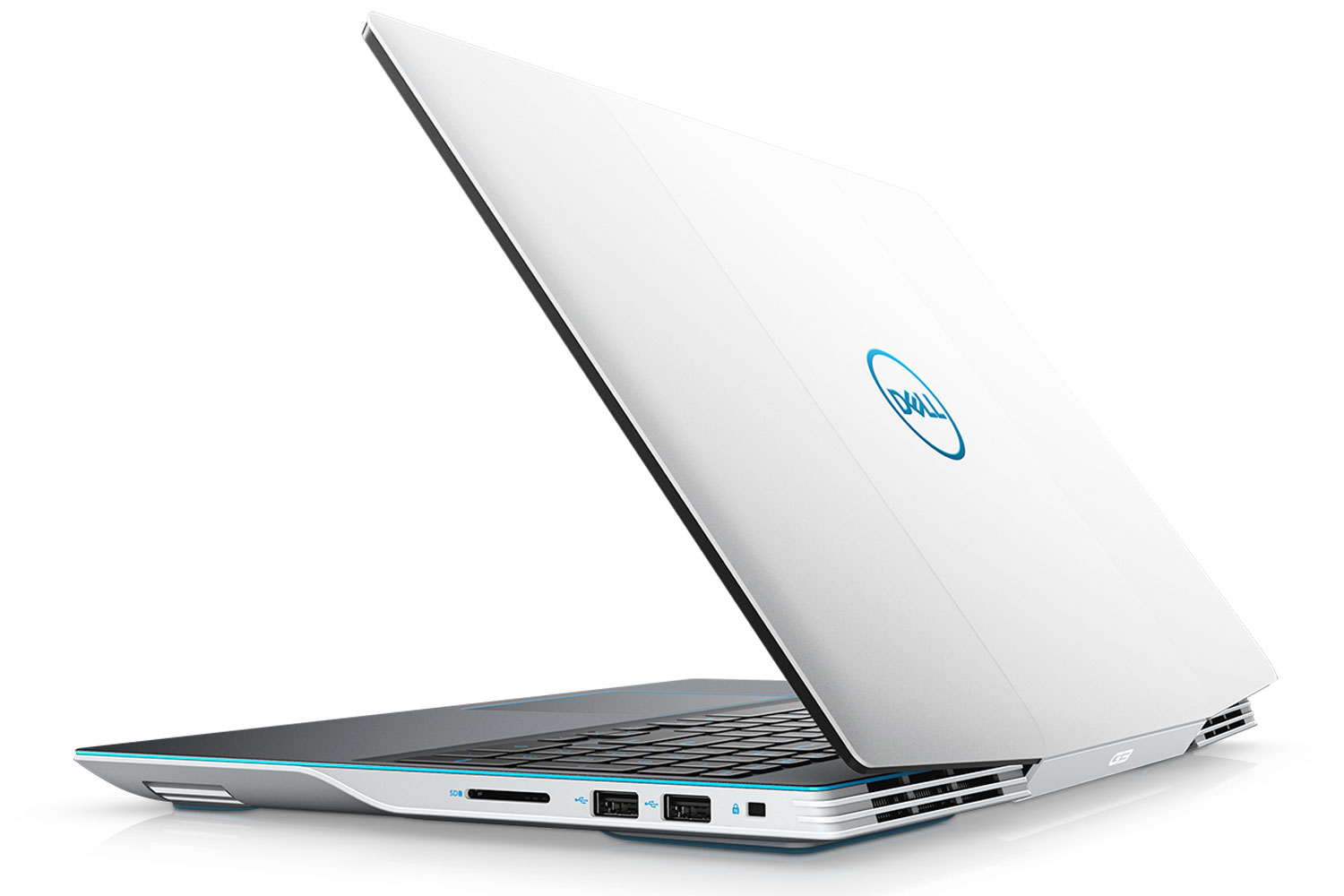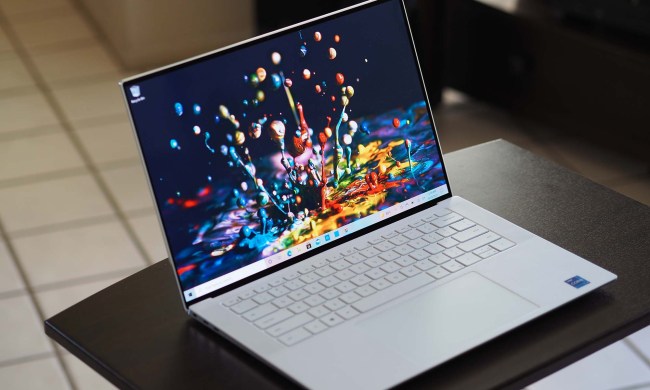Dell’s latest laptop refresh has a little something new for just about every range under its belt. The new XPS notebooks sport Intel’s first 10nm Ice Lake CPUs, the new Inspirons have upgraded processors and graphics, and the new Alienware systems are more capable gaming machines than they’ve ever been. There’s a lot to talk about and a lot to love with these new laptops, with something for just about everyone throughout the line up.
The XPS 13 2-in-1 is an exciting new piece of kit in Dell’s range of laptops, because it’s the first one to come packing Intel’s 10nm, 10-series processors. Buyers will have an option of a dual-core Core i3-1005 G1, a quad-core i5-1035 G1, or a quad-core i7-1065 G6 CPU. That can be partnered with up to 32GB of DDR4 memory, up to a terabyte of SSD storage, and a choice of displays between a 1080p model with 500 nits of brightness and an 1,800:1 contrast ratio, and a 4K panel that also supports HDR, a brightness of 500 nits, and a 1,500:1 contrast ratio.
Dell claims that the hardware delivers up to a 2.5 times increase in performance over the last generation Dell XPS 13 2-in-1, which was no slouch. It’s also increased the size of the display by seven percent, cut the physical size of the laptop down by eight percent, and improved the thermal management to create a cooler-operating system as well. Battery life is said to last as long as 16 hours in ideal circumstances.
No release date has yet been set, but when it does go on sale the new XPS 13 2-in-1 will start at $1,000.
The New XPS 15 packs one of Intel’s new, ninth-generation mobile CPUs, with up to eight-cores with the Core i9-9980HK under the hood. That’s paired with up to 64GB of DDR4 memory, up to 2TB of storage space, and an optional GTX 1650 graphics chip, making this an exceedingly powerful machine for work and gaming. Display options include a 1080p panel with a 1,500:1 contrast ratio, a 4K model with a 1,500:1 contrast ratio and 500 nits brightness, and a 4K OLED panel with a contrast ratio that reaches a staggering 100,000:1.
Starting at just four pounds in weight, the new XPS 15 is impressively portable for its size, with up to 20.5 hours of battery life in ideal circumstances. That’s quite an upgrade over the still solid battery life of its predecessor.
It’s on sale now, starting at a price of $1,000, or $1,900 if you opt for the OLED display.
In the more mainstream Inspiron range, Dell’s new Inspiron 11 3000 2-in-1 is an incredibly lightweight and affordable entry-point to mobile computing. With a starting price of just $350, it packs quite a punch, offering a seventh-generation AMD A9 APU, up to 128GB of flash storage, and up to 8GB of memory. The 11.6-inch display is small, but housed in a chassis that’s less than an inch thick, so it’s exceedingly portable. It stays cool and quiet too, thanks to integrated heat pipes for fast thermal transfer throughout the design.
The Dell Inspiron 11 3000 will go on sale on June 10 starting at $350.
The Inspiron 13 7000 and 15 7000 2-in-1s don’t change much on the hardware front, offering 8th generation Intel Core i5 and i7 CPUs, up to 16GB of DDR3 memory, and a choice of up to a terabyte of NVMe storage space. Its screen is bumped to an impressive 3,840 x 2160 IPS touch sensitive panel, however, making for a gorgeous looking display. The 15-inch version can power that display with a dedicated Nvidia MX250 graphics chip too.
It’s fully compatible with Dell’s Active Pen, which Dell sees as a major selling point of this laptop. It employs a new “pen garage” design that lets the pen fight right into the hinge without impeding its movement. It’s held in place by magnets and doesn’t block the hot air vents which have been redesigned to flow through the hinge, which itself had to be redesigned to provide new routing points for the internal cabling.
Other additions include a new keyboard design with a fingerprint reader built right into the power button, and changes to thermal management which adjusts performance based on whether the laptop is sitting on a desk seeing heavy use, or is being held in hand or on a lap. That way it avoids heating up the user in turn.
No release date has yet been set for these laptops in the U.S., but they’ll launch at a price of $730 for the 13-inch version, and $1,000 for the 15-inch iteration.
The 13-inch Insprion 5000 comes in cheaper than the XPS lineup with a starting price of just $730, but it’s lightweight at just 2.74 pounds and is less than 17mm thick, for a lean and sleek portable computing solution. It has been upgraded to eighth-generation Intel Core i5 CPUs with up to 8GB of DDR3 memory, and 512GB of PCIexpress SSD storage space. There’s also an optional MX250 graphics chip from Nvidia for some low-end gaming capabilities.
The larger, 15-inch 7000 takes things up a notch with much more capable internal hardware. It offers up to Intel ninth-generation Core H-class CPUs with as many as eight cores and 16GB of memory. Storage options include a blend of solid state PCIExpress drives and traditional hard drives, for more than a terabyte of space and high-speed boot times. There’s also the option of Nvidia GTX 1050 or 1650 graphics for some serious gaming power. Display options include 1080p and 4K panels.
Both new Inspiron systems support the latest Wi-Fi 6 standards and Bluetooth 5.0 for high-speed wireless connectivity. They also include newly uprated thermal designs that should help keep both laptops cool and quiet no matter what configuration of hardware you choose.
The Inspiron systems don’t have a North American releases date just yet, but will go on sale very soon, with prices starting at $580 and $1,000 for the 13-inch 5000 and 15-inch 7000, respectively.
For more serious gaming power, Dell has also upgraded its Alienware M15 and M17 systems, as well as introducing new Dell Gaming G3, and G7 models. The new Alienware laptops have been redesigned from the ground up to be relatively lightweight gaming solutions, weighing in at under five pounds for the M15, and under six pounds for the M17. They both include new keyboard and touchpad designs, magnesium alloy chassis, and optional Tobii eye tracking hardware (great for some games).
Each laptop includes full support for AlienFX RGB lighting on the power button and Alienware logo, as well as per-key backlighting on the keyboard. Enhanced cooling keeps internal components at a lower temperature while retaining quieter overall system noise levels, and improved voltage regulation makes overclocking far easier for enthusiasts.
As for the hardware, the M15 has options for Intel ninth-generation CPUs from the Core i5-9300H to the Core i9-9980HK with eight cores and a 5GHz boost clock. Memory goes up to 16GB and storage up to 4TB in a RAID 0 PCIExpress configuration, with everything in between. GPU options include a GTX 1650 and 1660, but go all the way up to RTX 2080 Max-Q designs. Buyers can pick between 1080p 60Hz, 1080p 240Hz, and 4K screens, all powered by a 76 watt-hour battery.
The M17 has the same CPU, memory, and GPU options, but doesn’t come with a 4K monitor option. Buyers at that size have the choice of 1080p panels only, with 60Hz and 144Hz models available. The battery is the same size too.
Both systems start at $1,500 and will go on sale on June 11.
The Dell range of gaming laptops is now equipped with the latest of internal hardware, with the G3 15 offering GTX 16-series graphics and up to ninth-generation, Core i7 CPUs. Its displays also come in flavors including 1080p 144Hz, for high-speed gaming. The larger Dell G7 15 offers even greater internal hardware, with up to eighth-generation Intel Core i9 CPUs, a choice of up to Nvidia RTX 2080 Max-Q graphics, and a choice of high-refresh rate 1080p and 4K displays. The 17-inch G7 17 has similar internal hardware configurables, but drops the 4K screen option in favor of a focus on high refresh rate 1080p panels.
The G3 15 is available starting May 28 with a starting price of $800. The G7 15 and G7 17 have yet to have pricing or release date information released.
